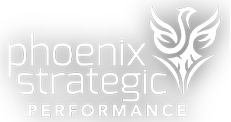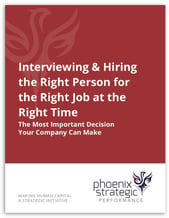Today, human capital is the new catchphrase to describe an organization's people. Over the years, the term human capital has been used to describe the people of the organization, including terms like employees, personnel, and talent. While the words we use have become more descriptive and trendy, has anything behind those terms changed over the years? Or, underneath it, do the structures, processes, and mindset about employees still reflect an old 'head count' mentality?
While the latest terminology, human capital, begins to elevate the topic of employees, we should be using the term "human assets" to align with the statement "that people are our most important asset." If we truly embrace that concept, we must turn our human resource structures upside down and think about people the same way we do the organization's other assets. Unless we embark on the Human Asset Management journey, the terms we use are empty.
In earlier blogs, I have talked about Human Asset Management regarding the following topics:
- Rethink, Renew & Refresh Your Human Asset Management Strategy
- A Fresh Approach to Human Asset Management
- Strategic HR: The Advocate of Human Asset Management
- There's No Organizational Replacement for Quality Leadership: Is Your Current Leadership Team Up to the Human Asset Management Task?
Human Asset Management and the C-Suite
Let's elevate the narrative of Human Asset Management to C-Suite terms. There is no denying that globally, organizations face a talent deficit of epic proportions. As the nature of work is continually transforming and disruptors like artificial intelligence and robotics are fast becoming the new normal, companies must continue to rethink their current business operating models. Industries that were once robust are now in their sunset years. New industries continue to evolve daily. What we will look like in 5–10 years may be completely unrecognizable from today's business paradigm.
Human Asset Management Strategy
At the heart of this transformational business, the dynamic is the human element. Employees are not static resources. If employees are not moving forward with their skills and knowledge in a continually changing work environment, they are ultimately moving backward. An employee who is 'skills relevant' today may be a depleted resource tomorrow as organizations face the demands of future work requirements.
Risk Management and the Complex Consequence Analysis of Human Asset Management
For every action, there is an equal and opposite reaction.
The statement means that in every interaction, there is a pair of forces acting on the two interacting objects. The size of the force on the first object equals the size of the force on the second object - Newton's Third Law.
Here is where an organization must ask the risk management and complex consequence questions. In Human Asset Management, every decision we make about people will have reactions that must be evaluated along the following criteria:
- Can your current people confidently meet the current and future business challenges that will allow your organization to compete profitably?
- Can your people confidently create a sustainable future business?
- What are the business risks?
- What are the business consequences of ignoring these risk issues?
- How robust is your organization?
- How resilient and healthy is your organization to absorb new work and different work driven by a dynamic marketplace?
Going Forward, Risks and Consequences
For years, we have been driven by the concept of headcount and cost-cutting to the point where we have depleted the people of our organizations. Cost-cutting has a place in running the business. Still, when it is done at the cost of a robust human asset management strategy, there is ultimately an organizational price to pay. Today, in many cases, organizations are dealing with the risks and consequences of human resource actions taken years ago. Organizations must change the mindset and truly think of a human asset management strategy with a robust risk management process. Organizations are still made up of people – one of our key assets. Manage people like the human assets they are and the value they bring to the organization.
We invite you to download our latest "Human Asset Management Strategy" Checklist, which highlights the criteria needed to evaluate your organization's human asset management strategy, or you can also schedule a complimentary assessment.






